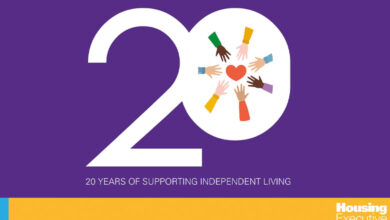Joining up to help NEETs
 All sectors in Northern Ireland must come together to tackle the growing dilemma of young people not in education, employment or training according to a report on the problem. agendaNi reports.
All sectors in Northern Ireland must come together to tackle the growing dilemma of young people not in education, employment or training according to a report on the problem. agendaNi reports.
A strategy to deal with the increasing number of 16 to 24 year olds who are not in education, employment or training (NEET) is expected to be brought to the Assembly for agreement in March and should be implemented by the autumn.
NEETs cost the local economy approximately £250 million per annum. The official Labour Force Survey definition of NEETs is: not in employment, government supported training or full-time education. The latest LFS statistics show that the number of NEETs has increased by 3,000 in three months. In quarter three (July to September 2010), 46,000 16-24 year olds were NEET. This had risen to 49,000 in quarter four (October to December).
During its inquiry into the problem, which is becoming exacerbated by the economic downturn, the Employment and Learning Committee heard young people describe their situation as “lonely”, “rejected” and “desperate”
“Unemployment affects [young people’s] self-esteem, emotional stability and overall well-being. These young people are likely to be less happy with friendships, family life and health than those in employment,” the committee reported in January.
The inquiry aimed to discover who NEET young people are, why they find themselves in that situation and how best they can be helped and supported. Stopping the growth of NEET young people would reduce the pressure on resources later if these young people do not go on to be economically inactive adults, the committee believes.
“The characteristics of, experiences of, and barriers faced by young people who are NEET are myriad, complex and, in many cases, interwoven and multi- layered,” according to the committee’s report. However NEET young people generally fall into one or more of the following categories:
• have experienced the care system;
• have had a negative experience of education, been bullied at school or had poor school attendance;
• are carers, parents or have family conflict or unstable home life;
• are members of a Traveller or Roma culture;
• have experienced drug or alcohol abuse or have committed a crime;
• have a physical, mental or learning disability; or
• have a lack of ambition or drive.
Employment and Learning Minister Danny Kennedy has begun compiling the strategy and has said he will take the committee’s recommendations on board.
Proposals
The NEET strategy should be cross-departmental and OFMDFM should oversee its implementation and funding. The strategy should contain “robust” systems for measuring, monitoring and assessing the achievement of its aims.
Partnerships and co-operation between the Executive departments, agencies and ‘stakeholder groups’ such as schools, colleges, universities, and business are integral to the strategy, the committee argues.
The work of the community and voluntary sector and the work of mentors and support workers should be acknowledged. It would also tie in with strategies on suicide prevention and children in care.
Interventions available to young people should be better signposted and they should be available continuously, even during summer holidays.
The committee visited Scotland and Wales during its inquiry and found that although their strategies were slow to take off, both jurisdictions had accepted a number of principles e.g. joined-up government when dealing with young people who are NEET. Subsequently, the committee recommends that the Scottish Activity Agreements and the Welsh E3+ programme be explored to see if similar programmes could apply in Northern Ireland.
The Careers Service should have access to all post-primary pupils in Northern Ireland, including those in alternative provision and those in the colleges. It should work with the Department of Education to overcome data-sharing problems and act as the repository for information regarding the interventions that young people have received, the committee believes. In addition, young people should begin their careers education in year 10 rather than 12.
In designing the strategy, officials should consider whether a 14+ vocational route for young people in schools should be developed. The committee states that this would be equal in quality to the academic route of GCSEs and A-levels and would contain agreed levels of English and STEM subjects. In relation to the educational maintenance allowance (EMA), the committee believes that may need to be targeted more specifically. Committee chair Doleres Kelly told agendaNi that the criteria for receiving EMA needs to be “refocused” towards those “to whom it provides a particularly significant incentive to re-engage.”
She added: “For example, someone could be getting £40 a week to take part in a training course but are only getting £30 a week for EMA. There must be better information, signposting and careers advice from an early age.”
In terms of funding the implementation of the strategy, the committee recommends that departments work collectively to access finance and produce better results. Kelly pointed out that the strategy should be implemented despite ongoing budget cuts because “some of the recommendations are not about new money.”
On 15 February, the Minister told the Assembly that one likely source of funding would be the Executive’s social investment fund.
“We are still waiting to see the criteria for how we can apply for that. That would be a sensible way forward for some of the funding initiatives that we could use,” he said.
Kelly concluded that departments need to work together on data collection and information sharing. “We need collaboration between departments, particularly DEL, education, OFMDFM – who have children and young people in their remit – and health, which deals with family support.”
| Year | Quarter | Population of 16-24 year olds | Population of NEETs | % NEET |
| 2009 | Jan-March | 235,300 | 40,000 | 17% |
| April-June | 230,000 | 46,000 | 20% | |
| July-Sept | 226,100 | 52,000 | 23% | |
| Oct-Dec | 234,000 | 35,000 | 15% | |
| 2010 | Jan-March | 228,000 | 41,000 | 18% |
| April-June | 234,000 | 42,000 | 18% | |
| July-Sept | 230,000 | 46,000 | 20% | |
| Oct-Dec | 223,000 | 49,000 | 22% |





